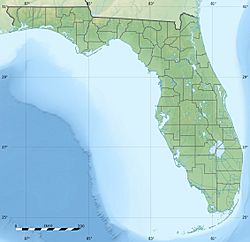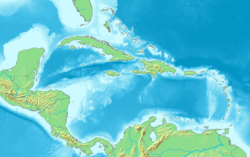Grassy Key facts for kids

Aerial view of Grassy Key, October 1987
|
|
| Geography | |
|---|---|
| Location | Gulf of Mexico |
| Coordinates | 24°45′42″N 80°57′19″W / 24.761777°N 80.955291°W |
| Archipelago | Florida Keys |
| Adjacent bodies of water | Florida Straits |
| Administration | |
| State | Florida |
| County | Monroe |
Grassy Key, Florida, is a beautiful island in the middle of the Florida Keys. You can find it along U.S. 1, also known as the Overseas Highway, around mile markers 57 to 60. It's just south of the Conch Keys. The island covers about 3.65 square kilometers and had a population of 974 people in the year 2000.
Grassy Key is one of the northernmost islands that make up the City of Marathon, Florida. On this "key," you'll discover many small, family-run resorts, some by the ocean and others by the bay. There are also many private homes here. Even though it has these places, Grassy Key is not as crowded as the main part of Marathon, which is further south. The entire island became part of the City of Marathon in 1999.
A very special place on Grassy Key is the Dolphin Research Center. It's a place where you can learn about and see dolphins. You can find it at mile marker 59.
Contents
Discovering Grassy Key's Past
Florida became a state in 1845. But the islands, called "keys," became official much later, around 1870. This happened after Charles F. Smith surveyed them. Some people say Grassy Key was named after an early settler around 1855. Other old papers say it was called "Ellis Island" before 1855.
Life was tough for early settlers. They faced many mosquitoes and tiny biting insects called "no-see-ums." Their houses had roofs made of straw, which storms often blew away. The island was also hard to reach, only by boat, so they felt cut off from other towns.
The Railroad Arrives
Things started to get better when the FEC railroad was built in 1908. This railway connected the island to the rest of the world. It brought new chances for tourism and made it easier to move goods. People could now transport things like pineapples, key limes, sponges, charcoal, and even shark skins.
Grassy Key got its first postmaster on August 26, 1908. His name was Julius W. Taylor. The island was originally called Crainlyn, after the Crain family who owned much of the land. Julius W. Taylor was the first person to invite tourists to Grassy Key. He advertised to people in Jacksonville, telling them to "come to Grassy Key where the ocean and Gulf breezes steadily blow" if they were suffering from the heat.
Building the Overseas Highway
In 1925, the first highway was finished. It had ferry crossings to fill a 40-mile (64 km) gap between the Lower Matcombe Keys and Key West. With this new highway running through Grassy Key, places like Ed Neff's Bonefish Lunchroom opened in 1935. It even had gas pumps for tourists who could now drive all the way to Key West. This road became famous as the Overseas Highway.
The Great 1935 Hurricane
A very strong hurricane hit Grassy Key in 1935. This storm caused a lot of damage. It washed away parts of the Overseas Highway and destroyed the ferry station. The railroad tracks were also swept into the sea. Many people were affected, especially World War I veterans who were living in tents while working on the highway bridges. After this, the railway was no longer used. Telephone lines were put in around 1938.
During World War II, the Overseas Highway was made even better and was renamed US Route 1. These improvements helped the Navy and made it easier to reach more of the Lower Keys.
Dolphin Research Center: A Special Place
In the 1940s, Milton Santini and his wife Virginia started Santini's Porpoise Training School. Before this, Milton was a fisherman who caught porpoises for aquariums. Milton truly cared for these animals. He even brought them into his home during a big hurricane. He kept them alive by wrapping them in damp towels until the storm passed.
Milton discovered he could train porpoises after he broke his back. For his recovery, he would sit near one of his man-made bays and squeeze a rubber ball. One day, he dropped the ball. Mitzi, a new dolphin, picked it up for him! This started a fun game between them.
Mitzi learned more games and tricks. She later became famous as Flipper from the 1963 movie. Mitzi passed away in 1972, and a large memorial was placed on the grounds. Milton sold the training school soon after Mitzi's death. The new owners called it Flipper's Training School.
In 1983, Jayne and Armando Rodriguez opened the Dolphin Research Center. It is a nonprofit organization, meaning it uses its money to help the dolphins and educate people. It is still open today at mile marker #59 and is the main attraction on Grassy Key.



